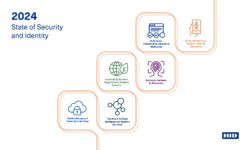Why Campus Emergency Notification Systems Performed Well During the Pandemic
According to the Campus Safety Emergency Notification Survey, only 3% of survey respondents said they experienced many pandemic-related problems.

FRAMINGHAM, Mass. — Over the past 18 months, SSI sister publication Campus Safety and its Online Summits have been covering how campuses have been adjusting to the ever-evolving issues posed by the coronavirus, but how have campus emergency notification systems, policies and procedures fared? Has the pandemic had a major impact on how campuses use their systems? How significant were the challenges campuses faced, and what lessons did K-12 schools and school districts, colleges and hospitals learn about emergency alerts during the coronavirus?
Those were just some of the questions posed by the 2021 Campus Safety Emergency Notification Survey. More than 300 campus protection professionals provided their input on those issues, as well as other hot topics.
Here are the results.
74% of Respondents Had No Challenges with Their Mass Notification Solutions
Despite the chaos, tragedy and uncertainty caused by the pandemic, campus emergency notification systems appear to have performed quite well overall. Nearly three quarters (74%) of all survey participants said they didn’t experience any pandemic-related challenges with their solutions (71% of K-12, 77% of colleges and 79% of healthcare). Only 3% said they experienced many problems, with 18% saying they experienced some or a few issues.
The challenges that were experienced most often involved delays, communicating with off-campus stakeholders and technology issues.
Many of the issues experienced cited by respondents were random and specific to their particular organization. For example, one survey participant said their organization struggled with employees not wanting to put the campus notification app on their personal phone.
COVID-19’s Impact on Use of Emergency Notification Was Minimal for Most
Considering so few campuses experienced any issues with their emergency notification systems, it’s not at all surprising that three in four respondents (75%) also said the pandemic didn’t affect how they use their mass notification systems. Only 4% said COVID-19 significantly affected how they use their systems, while 8% said their use of these systems was “somewhat” impacted. Nine percent said they were minimally impacted.
However, when broken down by sector, K-12 schools and school districts were the organizations that made the fewest changes in how they use their systems (16%), while 27% of colleges and universities and 30% of healthcare facilities made minimal to significant changes.
For those respondents who made changes in response to the pandemic, those revisions most often involved message content and the frequency the system is used.
For some, the big change was the fact that systems were used too much. In other cases, respondents’ mass notification systems were used much less during the pandemic.
Some campuses made equipment upgrades or tweaked the systems they currently own, while still others implemented policy or procedure changes.
Despite most campus emergency notification systems working quite well during the pandemic, our survey participants still learned important lessons from their experience during this world-wide COVID-19 catastrophe.
Some of the advice from respondents involved addressing database challenges. Off-site people opting out of an emergency alert system was an issue for another participant. Some respondents saw the pandemic as an opportunity to assess what they have and make needed changes.
Campus-Wide Notifications Rank Highest in Importance
The survey also asked participants to rank the level of importance of various system features and functionalities. “Campus-wide notifications (in-building and exterior alerts delivered to IP phones, PA speakers, digital signs, desktops, etc.)” was rated highest at 3.6 out of 4, while “weather alert integration” only rated a 2.6.
“Off-premises mass notification (i.e. SMS text, mobile app alerts, email, phone calls, social media, etc.” came in second with a rating of 3.5, while “physical security integration (i.e. door locks, security cameras, etc.)” got a 3.4 rating, and “end-to-end incident management” received a 3.3 rating. “IoT integration (i.e. shot detection, fire alarm, integration, gas sensor detection, etc.)” was rated 2.8 in importance.
Just over half of all survey participants believe mass notification systems should be able to take over a fire system during a non-emergency. However, the answers varied by sector: 49% for K-12, 50% for higher education and 59% for healthcare.
We also asked what survey participants are using for their in-building voice communications for mass notification, and overall, public address intercoms were the most popular at 62%. However, more than three out of four K-12 schools and healthcare facilities use PAs, compared to only 35% of higher ed campuses.
Colleges and universities are the campuses that are most likely to not use anything for in-building voice communication for mass notification (28%), which is concerning. Only 7% of K-12 respondents and no hospital respondents said they don’t use in-building voice communication for emergency alerts.
The survey also asked if respondents would support a state or federal regulation requiring mobile silent panic alarms, with 44% saying “yes,” 17% saying “no” and 39% being undecided. Support was greatest with K-12 participants — 54% compared to only 39% in higher ed and 31% in hospitals.
Mass Notification System Performance Gets a Passing Grade
Overall, it appears as though most campus emergency notification systems performed quite well during COVID-19, which speaks to the quality of the systems installed, as well as the policies and procedures supporting that technology.
Mass notification technology appears to have proven its durability during the pandemic.
DOWNLOAD THE REPORT, SURVEY PARTICIPANT COMMENTS AND CHARTS.
This article first appeared in SSI sister publication Campus Safety.
If you enjoyed this article and want to receive more valuable industry content like this, click here to sign up for our FREE digital newsletters!

Security Is Our Business, Too
For professionals who recommend, buy and install all types of electronic security equipment, a free subscription to Commercial Integrator + Security Sales & Integration is like having a consultant on call. You’ll find an ideal balance of technology and business coverage, with installation tips and techniques for products and updates on how to add to your bottom line.
A FREE subscription to the top resource for security and integration industry will prove to be invaluable.













